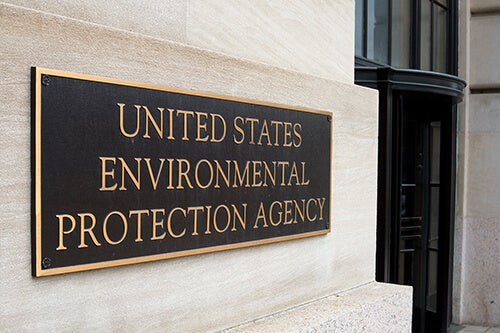Persistent organic pollutants (POPs) have long been on the regulatory radar, particularly in the EU, which implements requirements from the Stockholm Convention through its own EU POPs regulation. However, recent developments are about to shake things up for manufacturers and suppliers with products in the EU. Here’s what you need to know about POPs in 2025, how they align with the evolving concept of substances of concern (SOCs), and how upcoming Ecodesign for Sustainable Products Regulation (ESPR) requirements — including digital product passports (DPPs) — will impact your business.
A Quick Refresher on POPs
POPs are chemicals that persist in the environment, bioaccumulate through the food web, and pose risks to human health and the environment. The Stockholm Convention is the global treaty aiming to eliminate or restrict their production and use. Each signatory country implements these rules locally. In the EU, that happens through the EU POPs Regulation.
Because the United States has not ratified the Stockholm Convention, U.S.-based companies that sell into the EU (or other signatory markets) may face additional obligations. Meanwhile, other signatories (like Canada or Japan) implement the treaty requirements within their own legal frameworks (e.g., the Canadian Environmental Protection Act).
Why POPs Are Top of Mind in 2025
POPs restrictions continue to evolve in 2025. In the EU, substances like UV-328 have seen new or updated limits, which take effect in June 2025. Meanwhile, some other Stockholm Convention signatories outside the EU have already enforced similar restrictions or plan to do so on different timelines. This patchwork of effective dates means manufacturers should track deadlines per market, rather than relying on a single global timeline.
A major shift is that POPs are now considered part of the EU’s broader SOC definition under the new ESPR. While POPs have historically been a niche set of chemicals with clear thresholds, they’re becoming more visible thanks to ESPR’s expanded scope. Under ESPR, POPs — like other SOCs — must be reported in DPPs if they are present in your product, even if they’re below the specific POP threshold.
This means that if you’re subject to the ESPR, you now need specific POPs data to fulfill your DPP obligations. Falling short on POPs documentation can lead to incomplete DPPs — and that could jeopardize your EU market access.
Understanding Substances of Concern (SOCs)
POPs are just one slice of SOCs, which include:
- Substances of very high concern (SVHCs) regulated under REACH
- Substances restricted under Annex XVII of REACH (where relevant)
- Certain hazard classes recognized in the Classification, Labeling & Packaging (CLP) Regulation
- Any substance that negatively impacts reuse/recycling, a broader category the EU is exploring
The EU has indicated there will be no consolidated, all-in-one SOC list. Companies must track these various lists and categories separately. That makes robust data collection and management more critical than ever.
Digital Product Passports: POPs Front & Center
DPPs are a core part of the EU’s effort, via ESPR, to create more transparent, sustainable product lifecycles. By scanning a simple code on a product, stakeholders — from regulators to recyclers to consumers — can see the product’s composition, including any substances classified as SOCs.
Since POPs are among these SOCs, even small concentrations must be reported in DPPs. This development effectively brings POPs into the mainstream of EU sustainability legislation. In the past, many suppliers were not concerned with POPs unless they were dealing with a high-risk chemical application. That’s changing as ESPR ties them to a core market-access requirement.
Timeline & Compliance Planning
Exact deadlines under ESPR will vary by product category, as the EU introduces product-specific “delegated acts” over time. Some industries may see these rules come into force sooner than others. However, if you manufacture or place products on the EU market, you should start collecting SOC/POPs data right away, even if your product category’s deadline isn’t yet finalized.
Meanwhile, EU POPs updates continue to roll out in 2025:
- Certain restrictions on UV-328 and dechlorinated chemicals arrive in June 2025 in the EU, though some other global markets have already implemented them
- Exemptions for specific uses (e.g., specialized industrial applications) may exist, but they often come with expiration dates
What Should Companies Do Next?
- Assess Current Materials & Processes
- Identify any POPs in your supply chain — even if they’re below threshold limits
- Understand which exemptions may apply to your specific use cases and note expiration dates
- Plan for ESPR & DPP Requirements
- Start gathering data on all SOCs (including POPs)
- Prepare to create or integrate DPPs for your products
- Keep tabs on delegated acts under the ESPR to understand timelines for your product category
- Implement a Holistic SOC Strategy
- Recognize that POPs are just one part of SOCs. You’ll also need robust processes to track SVHCs, Annex XVII substances, and other hazard classes
- Since the EU won’t maintain a single SOC list, consider using a solution that automatically monitor regulatory updates and track changes across multiple lists
- Stay Informed
- Monitor official EU communications, industry groups, and regulatory intelligence platforms
- Keep an eye on new or updated restrictions in other markets, especially if you sell globally
How Assent Helps
With the expanded scope of POPs under ESPR and the complexity of tracking multiple SOC lists, it’s never been more important to have a comprehensive compliance strategy. Assent offers an end-to-end SOC solution that helps you:
- Keep your restricted substance records accurate and ready for audits, including tracking thresholds
- Maintain an updated POPs substance list
- Quickly generate declarable substance reports, filtered by part and regulation, in a standard format
- Speed up declarations by importing IPC-1752A Class D XML files
- Stay on top of campaign progress and submissions through clear, visual dashboards
To learn more about how Assent can help you meet your evolving POPs requirements, book a demo with our team.













